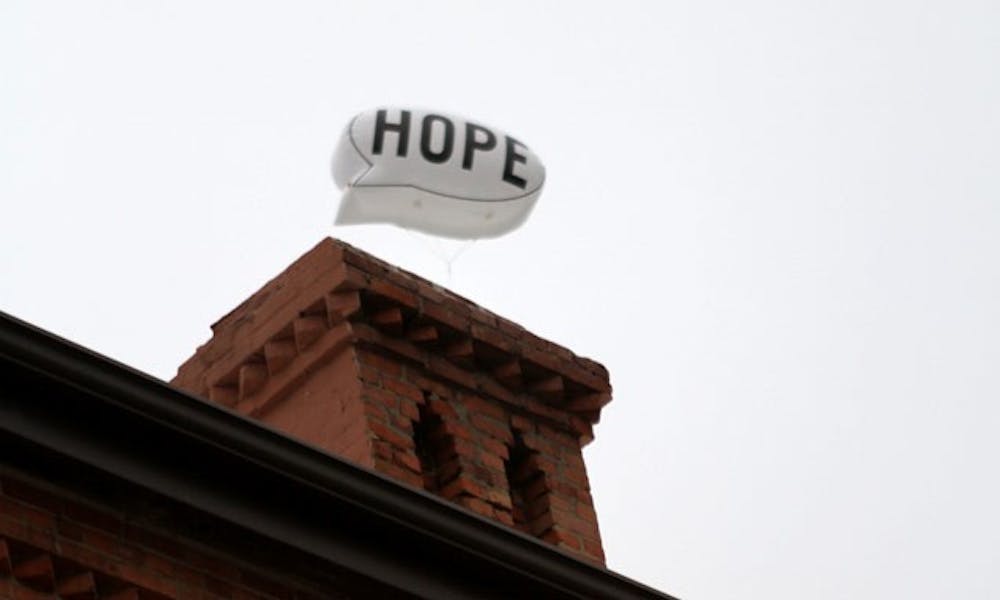Hank Willis Thomas has, in his short career, branded our collective memory with his stunning and evocative imagery. With a keen sensitivity to the impact of visuals and visual history, Thomas reveals a cultural treachery of images far beyond Magritte’s purview.
In the small, multi-site survey of Thomas’ work curated by Diego Cortez at the John Hope Franklin Center and Franklin Humanities Institute, the artist’s impact becomes immediately clear. The Center hosts Hope, eight works from 2003 to the present, which illustrates the artist’s engagement with popular imagery and the formation of cultural identities—most often black masculinity. In his most iconic works from the Branded and Unbranded series, Thomas appropriates advertising images to consider the links between past and present conceptions of blackness. “Hang Time Circa 1923,” in a stunning black and white print, depicts the iconic “Jumpman” logo emblazoning Michael Jordan’s line of shoes and clothing lynched. The work collapses historical moments of black history, considering the historical formulation and sublation of black male identity—the athlete, the able-bodied slave and the lynched man.
The inclusion of Thomas’ more recent engagement with femininity enhances the exhibition’s discourse on gender. “Alive with Pleasure” (2009) portrays an arc of JET Magazine-style pinup girls and models from the latter end of the 20th century. This rainbow functions not only as an interrogation of image-forming identity but also as the desiring (male) gaze that creates and sexualizes these women.
At the Franklin Institute, these issues are given actual words in “Question Bridge: Black Male.” The video, a collaboration with photographers Chris Johnson, Bayete Ross Smith and Kamal Sinclair, is a single-channel draft of a still-in-progress multi-channel video installation and web project. The project places black men of varying age from around the U.S. in a dialogue regarding black identity and masculinity. These isolated figures come into contact through video sequencing. The deeply personal accounts vocalize so many of the issues at play in Thomas’ photo-conceptual work but surrender to a documentary or ethnographic aesthetic. Although the dialogue of “Question Bridge” makes clear the themes at work, the oral-linguistic vector of the film traps it in a more intellectual field, rendering the print work more emotionally compelling.
The only new work in the exhibition is a large-scale balloon floating above Smith Warehouse. In the shape of a speech bubble and printed with the word “HOPE,” the eponymous site-specific balloon not only engages the namesake of the Center and Institute at which the work is shown, but is also the only point of the exhibition in which the space can live up to the work. The balloon, which also references Thomas’ lenticular print “Hopeless/Hopeful” (2009), is playful and multivalent, gently urging us to perform its simple imperative: hope.
Hope is on display at the John Hope Franklin Center, and Question Bridge and Hope (2011) are on display in the Franklin Humanities Institute within Smith Warehouse. All are on display through March 4.
Get The Chronicle straight to your inbox
Signup for our weekly newsletter. Cancel at any time.

